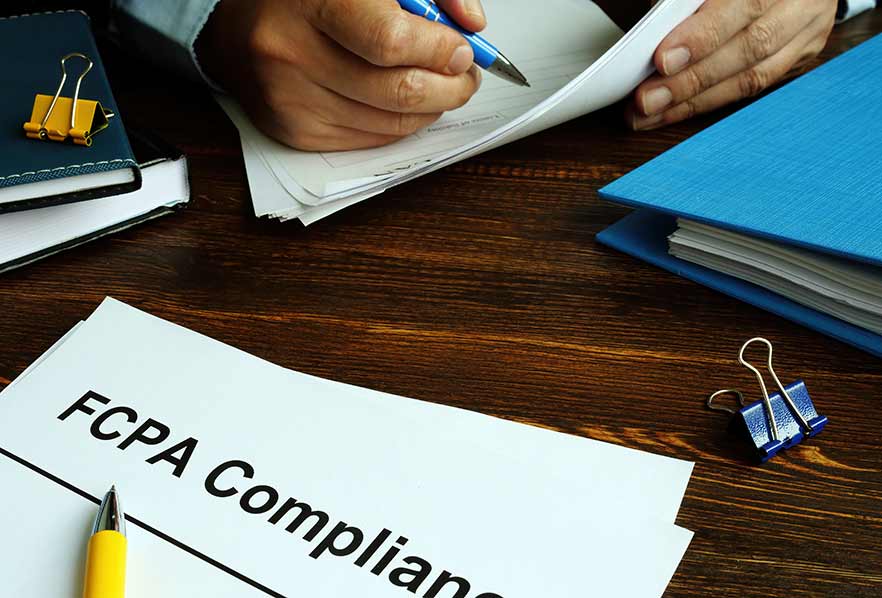Nearly every American has received some type of laboratory testing, many regularly. Lab tests are at the base of the healthcare pyramid. That fact, as well as how easily new tests are brought to consumers, may explain why laboratory fraud persists. Blood testing almost always requires a healthcare provider’s order. The interdependence between the healthcare provider, the testing, and the laboratory has often caused criminal, civil, and compliance problems. This article will discuss the pervasiveness of fraud in the behemoth laboratory industry from the 1990s to the present, as well as the False Claims Act (FCA) jurisprudence developed through the joint efforts of the government and whistleblowers to rein in new and old lab fraud schemes.
Due to a series of innovative whistleblower cases, “Operation LabScam” was launched in the 1990s. The U.S. Department of Justice (DOJ) and multiple U.S. Attorney’s Offices throughout the country settled some of the largest laboratory fraud cases at the time. For example, the DOJ entered into settlements with Laboratory Corporation of America Inc. (Labcorp), for $187 million, Damon Clinical Laboratories Inc. for $119 million, and National Health Laboratories for $111 million. One of the largest FCA recoveries in a lab case at the time was United States ex rel. Robert J. Merena v. SmithKline Beecham Corporation resulted in a then-ground-breaking recovery of $325 million.[1] In Operation LabScam, the FCA served as an effective tool for exposing overbilling lab schemes.
In the wake of these sizeable recoveries, the U.S. Department of Health & Human Services Office of Inspector General (OIG) issued robust guidance on how labs should interact with healthcare providers in a position to refer patients for testing in 1997 and 1998.[2] Additionally, the industry also published articles and held seminars providing compliance guidance. OIG, the lab industry, and other industry stakeholders believed this well-published compliance framework would curb future laboratory fraud. Regrettably, all believed wrongly.
By 2010, prosecutors, whistleblowers, and their counsel were again exposing brazen lab fraud schemes described in interesting qui tam pleadings. Despite robust government guidance and significant compliance resources, these cases demonstrated that old laboratory fraud had become new again. In fact, OIG reissued its guidance in 2014 in response to the plethora of emerging lab scams.[3]
Money for blood
One of the more colorful laboratory fraud cases involved an upstart lab whose marketing plans were almost entirely based on kickbacks to referring physicians. The case, United States of America et al. v. BlueWave Healthcare Consultants Inc., Latonya Mallory, Floyd Calhoun Dent, III, and Robert Bradford Johnson et al., played out before United States District Judge Richard Mark Gergel in a courtroom in Charleston, South Carolina.[4] The government intervened in a group of qui tam cases filed by whistleblowers from South Carolina and California. These cases involved protracted litigation, beginning with pre-litigation seizure of assets and ending in an 11-day jury trial resulting in historic judgments. These recent whistleblower cases demonstrate that laboratory fraud is back and thriving. During a 2015 criminal trial in New Jersey, another lab fraud defendant testified that the only way to break into the lab industry was to pay kickbacks to referring physicians.[5]
In February 2013, two South Carolina natives, Scarlett Lutz and Kayla Webster, filed a qui tam case alleging a conspiracy to violate the FCA by a giant of the lab industry, Labcorp. Their case detailed a scheme by two upstart laboratories, Health Diagnostic Laboratory (HDL) out of Richmond, Virginia, and Singulex, based in Alameda, California, to pay kickbacks to referring doctors. Disguised as draw fees or process and handling fees, the kickbacks purportedly paid the doctors to obtain their patients’ blood for testing.[6] Lutz and Webster alleged that HDL and Singulex, with their marketing agent, BlueWave (through its founders Dent and Johnson), had devised the scheme to expand HDL’s and Singulex’s physician customer base by offering above-market blood draw fees ($20 for HDL and $10 for Singulex) to referring physicians. By contrast, this same service garners a $3 payment when billed by the doctor directly to Medicare.
Lutz and Webster alleged that Labcorp entered the scheme by performing the crucial blood draws that Labcorp’s doctor customers were supposed to perform themselves. These relators alleged that Labcorp drew the blood samples so the physician would receive the draw fee inducements from HDL or Singulex, thereby putting thousands of dollars in the referring doctor’s pocket each month.
HDL became a highly lucrative laboratory that received over $500 million from government healthcare programs between its start of kickback payments in early 2010 and late 2014.[7] HDL, in turn, paid BlueWave approximately $220 million. Government healthcare programs also paid Singulex approximately $47 million during the same time.[8] In June 2014, the government’s investigation of multiple qui tam cases led to an OIG fraud alert[9] and cessation of kickback payments.
The government intervened in the Lutz and Webster relators’ claims against several individuals integral to the scheme—the owners of BlueWave, Cal Dent and Brad Johnson, as well as the CEO and cofounder of HDL, Tonya Mallory. Heated litigation led by the United States Attorney’s Office in South Carolina and DOJ concluded in an 11-day jury trial and resulted in a verdict in excess of $114 million against marketers Dent, Johnson, and CEO Mallory, later affirmed by the Fourth Circuit Court of Appeals. (The trustee in the HDL bankruptcy pursued the referring physicians in order to collect illegal kickback payments for distribution to HDL’s creditors.)[10]
All eyes then turned on the final conspirator, Labcorp. Relators Lutz and Webster and their team of trial counsel then pursued, in a nonintervened status, one of the largest clinical laboratories in the world. In an interesting twist, however, Labcorp attempted to portray itself as a whistleblower based on an earlier, anonymous request to OIG for a fraud alert naming HDL, its coconspirator, as a fraudster.[11]
After prevailing at summary judgment on all counts, and as final preparations for trial were being made, in January 2023, relators Lutz and Webster achieved a $19 million settlement with Labcorp on behalf of American taxpayers. Resolving Labcorp’s participation in the HDL and Singulex kickback conspiracy thus ended a 13-year odyssey to resolve the latest lab scams.[12]
These FCA cases involved quintessential kickback fodder—the payment of cash bribes to physicians. To enter the lab space, startups HDL and Singulex paid lucrative kickbacks disguised as draw fees (later cloaked as “processing and handling” fees) to prescribing physicians all over the country to induce those doctors to order tests from HDL or Singulex. The magnitude of the fraud in terms of cost to healthcare programs was directly related to the cost of the tests—HDL’s most popular panel costs $3,000 to $4,000; Singulex’s tests cost about $300.[13] Although both HDL and Singulex are now out of business, these intervened and nonintervened cases exposed the dark side of the laboratory industry and the fact that mega labs and aspiring startups are working side by side.[14]




